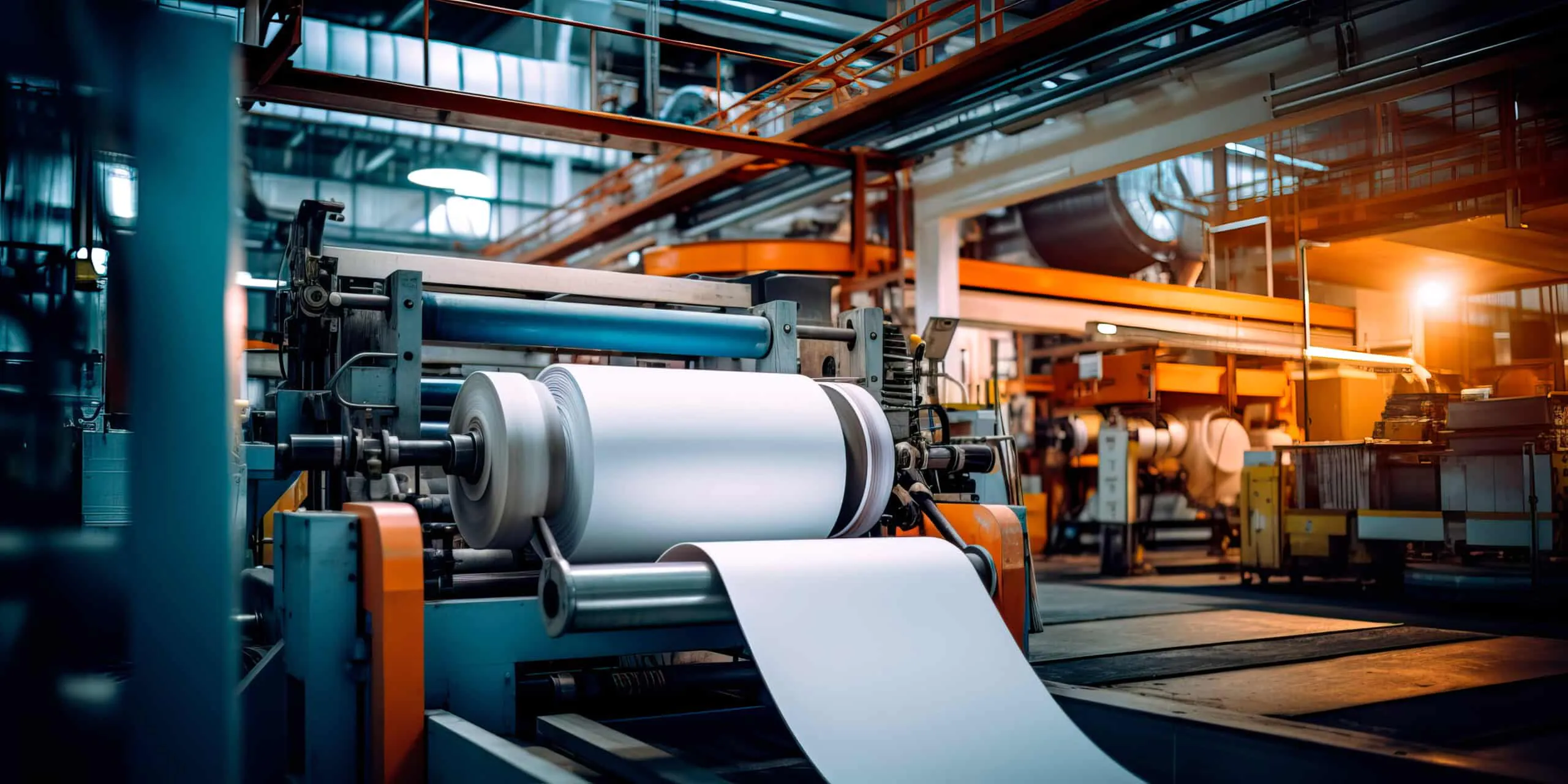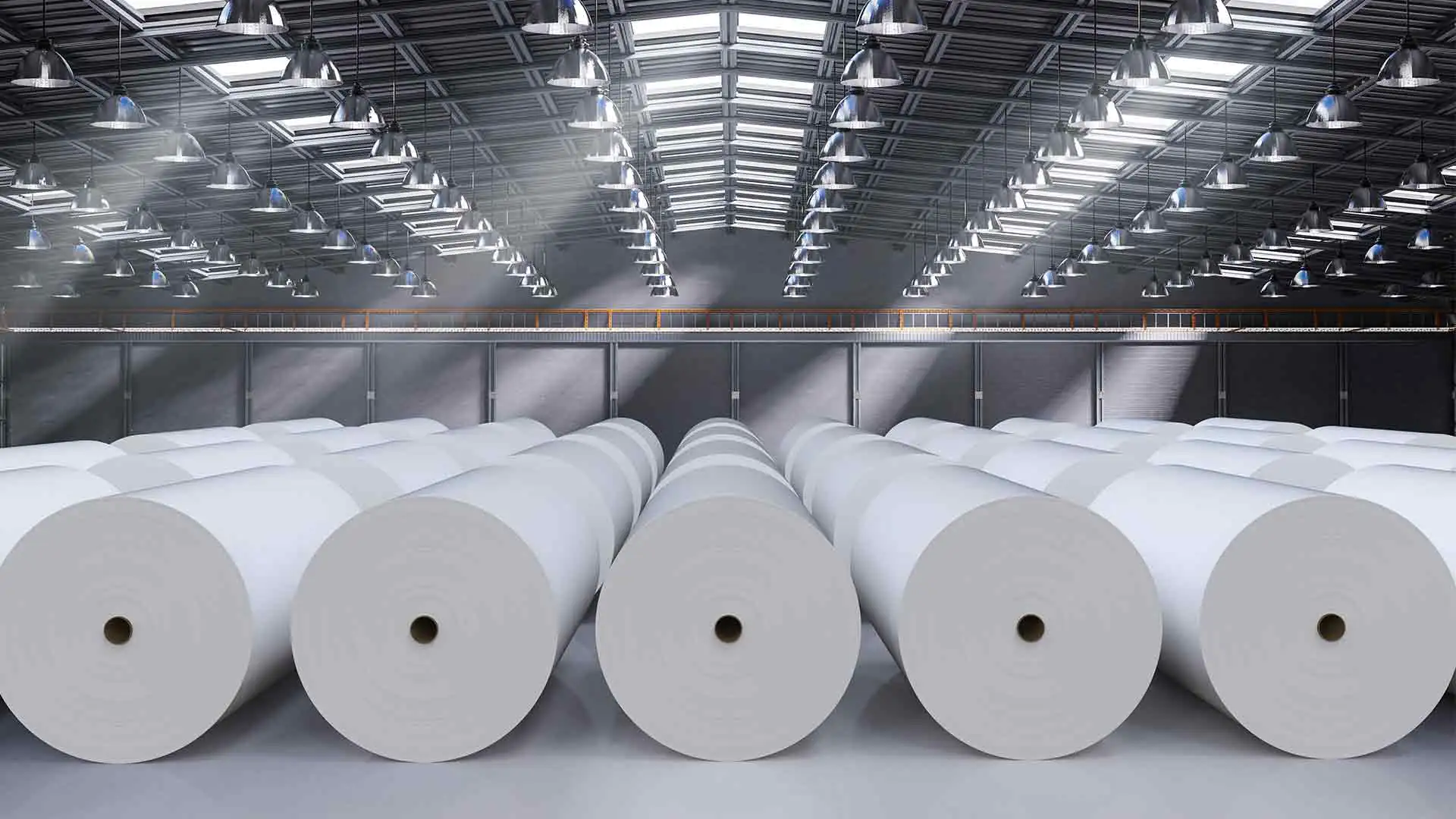28.02.2025
The paper industry is a rapidly growing sector that plays a key role in many industries. However, paper production processes generate significant amounts of dust, which poses serious challenges to efficiency, product quality and worker safety. Therefore, dust control plays an extremely important role. Paper dust, consisting of fibrous and organic particles, is generated at many stages of the production process. Understanding how and where dust is generated is crucial to the effective design of dust collection systems.
Dust sources in the paper industry
The paper production process involves many steps, each of which can generate significant amounts of organic and fibrous dust. The most important of these are:
1. Drying of pulp
When pulp is dried, water is evaporated, leading to the formation of fine dust particles floating in the air. This process, while necessary for pulp quality, generates particles that can endanger the health of workers and reduce the quality of final products.
2. Processing of raw materials
In the process of grinding, cutting and shredding raw materials such as wood or waste paper, significant amounts of fiber dust are released. Cellulose fibers, especially recycled ones, are lightweight and easily airborne, creating health and work environment hazards.

3. Recycling processes
When recovering fibers from recovered paper, dust is generated both at the mechanical shredding stage and during the screening and drying of the recovered materials. Recycled dust often contains not only cellulose, but also residues of adhesives, inks and other chemicals, making it even more difficult to filter.
4. Paper finishing processes
Coatings, varnishes and chemicals are used in the final stage of paper production, when certain physical and aesthetic properties, such as smoothness, gloss and moisture resistance, are imparted to the paper. The application and polishing of these substances generate dust that can contain chemicals that are harmful to the health of workers.
5. Paper cutting and processing
Paper cutting, perforating and folding operations generate fine dust particles that easily spread through production halls. These processes require effective dust collection systems to prevent dust from settling on machinery, which can lead to equipment failures and production downtime.

Dust hazards in the paper industry
Dust generated during paper production poses a threat on several levels:
– Workers’ health: Fine dust particles can penetrate the respiratory system, causing irritation, allergies, and long-term exposure can lead to occupational diseases such as pneumoconiosis.
– Process safety: Organic dust, including paper dust, is highly flammable and can create an explosive atmosphere, according to the ATEX directive. Improper emission control can lead to serious incidents, including explosions and fires.
– Product quality: Dust deposition on the surface of the paper can deteriorate the quality of the final product, affecting its smoothness, strength and aesthetic qualities.
-Operational efficiency:Dust deposited on production machines contributes to faster wear, breakdowns and costly downtime.
Dust in the paper industry is not just a matter of keeping the plant clean, but more importantly an aspect of safety, efficiency and environmental compliance. NEU-JKF Ltd. offers comprehensive, personalized dust collection solutions to help companies minimize risks, optimize costs and ensure safe and efficient working conditions.
We invite you to contact and cooperate with us.

